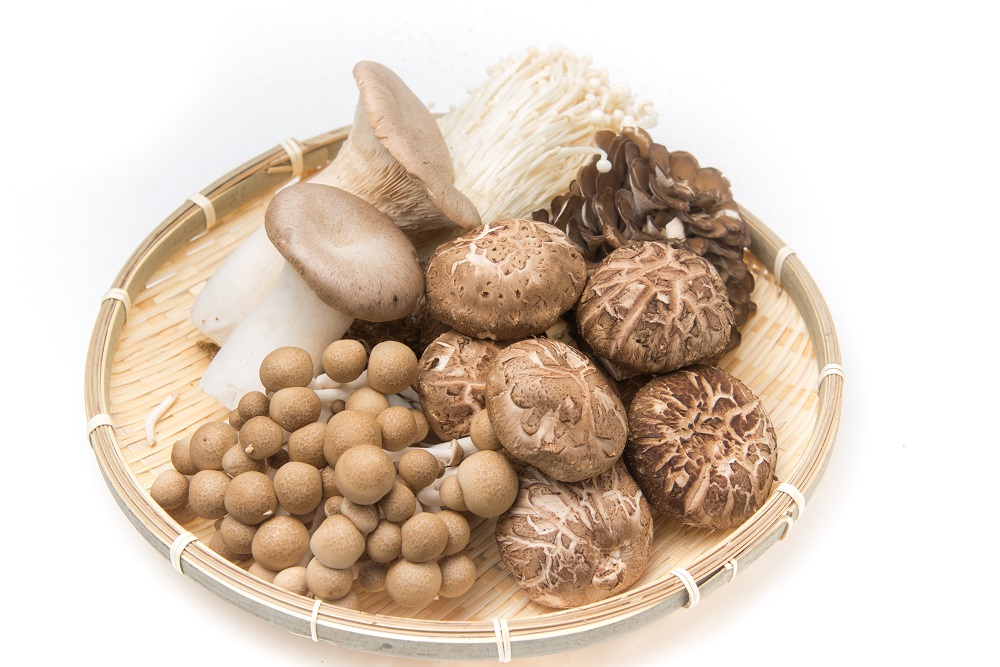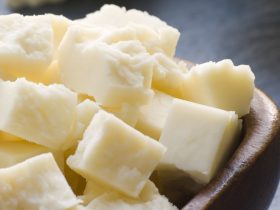While the term mushroom refers to a variety of macrofungal growths that may or may not be edible, in a culinary sense, mushrooms are the edible growth bodies of mushrooms that are safe to eat and generally available throughout the world.
Mushrooms may come in a variety of colors and shapes, wherein they are consumed for their flavor and significant nutritional value.
However, owing to the fact that they can become quite expensive depending on the particular species as well as the fact that they may not grow well in all types of climates, many home chefs find themselves searching for an alternative to these fungal bodies.
There are many viable alternatives, and as such are easily classified depending on the particular characteristic of mushrooms that said individual wishes to replace, such as their nutritional value or flavor.
What do Mushrooms Bring to a Dish?
Mushrooms present a variety of beneficial characteristics to any dish they are added to, and as such have become quite a popular ingredient in a variety of different cuisines.
While the particular flavor, texture, appearance and nutritional value of edible mushrooms depends on the species being cooked, certain characteristics are shared between most types of edible mushrooms, and because of this they may be substituted depending on these particular characteristics.
However, the vast majority of mushrooms are described as having an ‘umami’ or ‘savory’ taste, with notes of earthiness that closely resemble that of low fat percentage meat.

Texturally, mushrooms can be toughened to the consistency of steak or stewed until they are practically jelly-like, with the particular textural consistency depending on the method of cooking they undergo.
In the case of nutrition, the commonly consumed white mushroom is said to be quite high in certain types of vitamin B, minerals such as phosphorus and selenium as well as the all important macronutrient of protein.
Fortunately, this particular nutritional profile is easily replaced by a variety of other organic foods, and as such is the easiest characteristic of mushrooms to substitute in a meal.
Can Mushrooms be Substituted for Meat?
Ordinarily, mushrooms act as a meat alternative for vegans or individuals wishing to control their cholesterol intake. However, it is also possible to do the opposite and to instead replace the mushrooms with meat.
The exact applications of this depend on the method of cooking and the sort of dish the mushrooms are being replaced in.
Things like mushroom steaks, pasta with mushroom toppings or even pizza ingredients are all completely replaceable with certain types of meat, depending on whether it is the savory flavor of the mushrooms or its texture that you wish to substitute for.
Textural Substitutes for Mushrooms
Fittingly, most vegetable based textural substitutes to mushrooms also share the same umami flavors that are characteristic of the macrofungal body. However, it is unlikely that they will possess the exact same taste as mushrooms, and as such may alter the flavor composition of a dish somewhat.
Tofu
A mainstay of vegan and vegetarian cuisine, tofu is a form of compressed soy with notably high volumes of protein and significantly lower calories than most other types of food with similar volume and texture.
Tofu, practically being physically compressed jelly, can replicate the texture of many sorts of food products, becoming tougher or softer depending on the compression it undergoes.
In the case of mushrooms, tofu’s ordinary firmness when purchased from a grocer or market is more than similar enough to replicate the slightly delicate texture of mushroom. In the event that you are planning to boil or otherwise cook the tofu in such a way that it may lose some of its firmness, extra-firm tofu may always be purchased to mitigate this loss.
Tempeh
Also a processed soy product, tempeh is a native Indonesian protein source primarily produced by fermenting soybeans using a fungal culture otherwise referred to as a tempeh starter.
Tempeh differs from tofu in its flavor, which is more akin to that of certain types of mushrooms than tofu is, and as such tempeh makes both an excellent flavor and texture substitute for mushrooms.
Texturally, tempeh is considered to be quite firm, especially if produced in the traditional manner wherein it is subsequently served tightly wrapped in a banana leaf after being prepared.
However, tempeh may possess an uneven texture, as, unlike tofu, tempeh retains the entirety of the soybean, essentially creating a brick of beans tightly congealed in a tofu-like protein mixture.
Eggplant
The eggplant, otherwise known as an aubergine, is not a vegetable one would ordinarily consider when choosing to substitute mushrooms in terms of textural similarity.
However, the eggplant in fact possesses much the same textural consistency and characteristics as mushrooms do, with a somewhat firm flesh and nearly unnoticeable skin.
While the skin of an eggplant is difficult to notice, it may still impair the textural similarity between it and mushrooms, and as such it is advisable to first peel the eggplant prior to incorporating it into your desired dish.
Keep in mind that eggplants easily become slimy if overcooked, and therefore is best used in dishes wherein the mushrooms to be substituted are not subjected to boiling or overcooking. Fried or grilled eggplants have a nearly identical textural consistency as mushrooms.
Flavor Substitutes for Mushrooms
Mushrooms, apart from being quite healthy, are also known for being an excellent and vegan friendly umami flavoring, sometimes being dried and grated to use as an alternative to mono sodium glutamate, the quintessential umami flavoring compound.
However, while mushrooms are used as a substitute for many food flavorings, there are also certain cases wherein the mushrooms themselves must be substituted.
Fortunately, the umami flavor exists in many other natural and organic foods, and it is likely many home chefs already have these ingredients right in their refrigerator or pantry.
Zucchini
The zucchini, while quite different in taxonomy and relative shape, presents an excellent umami flavor that is somewhat similar to that of mushrooms, making it an excellent flavor substitute to the mushroom in certain situations.
This is all the more so in dishes wherein a dressing or sauce helps mask the flavor differences between the two vegetables, allowing the savory undernotes of zucchini to act as a buffer in much the same way a mushroom’s flavors would.
Chickpeas
One of the more popular savory vegetables, chickpeas are also an excellent replacement for mushrooms in terms of taste owing to the similarity between the earthy undertones of each vegetable.
This is further bolstered by the distinctly nutty and savory body of the chickpeas’ flavor, while not exactly the same as mushrooms’ own flavoring, functions much the same in dishes that ordinarily call for such characteristic flavorings from mushrooms.
Additionally, chickpeas possess a significant volume of protein per gram, even more than that of mushrooms, making them an excellent nutritional substitute for mushrooms asides from that of a flavor substitute.
Tofu
As previously mentioned earlier in this article, tofu is both an excellent flavor substitute and texture substitute for mushrooms owing to its mild but savory flavor that may be altered so as to fit the particular flavor profile of the dish normally incorporating said mushrooms.
This may be done by adding spices and sauces such as soy sauce or pepper in order to achieve a closer taste to that of mushrooms than tofu alone would ordinarily possess.
Seasoning Substitute for Mushrooms
While mushrooms are often used as an ingredient for their texture and particular nutrient profile, there are a few combinations of seasonings that may allow a chef to incorporate certain notes of flavor normally found in mushrooms into their cooking.
Monosodium Glutamate (MSG)
Monosodium glutamate or MSG is, essentially, pure umami flavor, and as such works as an excellent replacement for the savory body of flavor that mushrooms are noted for.
The benefit to using monosodium glutamate as an umami flavor replacement pertaining to mushrooms is the lack of calories as well as the ease in using it.
Normally being purchased in its powdered and crystalline form, MSG is an extremely versatile ingredient that may be added to any dish that normally requires mushrooms to make up the majority of its umami flavor.
Garlic Powder/ Garlic Flour
While not exactly similar in total flavor to mushrooms, garlic is also a relatively well known umami ingredient that may be incorporated into nearly any dish that ordinarily calls for mushrooms. The key to doing so is to only use the garlic powder in moderation, as too much garlic or its subsequent powder will quickly become the most noticeable flavor in the dish.
Additionally, garlic powder acts as a powdered ingredient in a far more efficient manner than mushrooms would when being added to sauces and soups, creating a smoother texture.
Soy Sauce
Much like MSG, soy sauce is a distinctly umami-flavored condiment primarily used to add a savory note to a variety of dishes without overpowering the original taste of the food itself.
Unlike mushrooms, however, soy sauce ordinarily comes in fluid form, and as such may not be suitable for incorporating into every sort of dish, such as pizza.
This is exacerbated by the fact that soy sauce, even in moderate amounts, is distinctly more salty than mushrooms, and as such should only be used in minute amounts to prevent it from overpowering the food’s flavoring.
References
1. Chang, Shu-Ting; Phillip G. Miles (1989). Mushrooms: cultivation, nutritional value, medicinal effect, and Environmental Impact. CRC Press. pp. 4–6. ISBN 978-0-8493-1043-0
2. Knopper, Melissa. (Jan 2002), The joy of soy, The Rotarian, Vol. 180, No. 1,





Hi, I'm Dom
Dom Eats was started to help other people fall in love with food. While cooking can feel intimidating, it doesn't have to be.